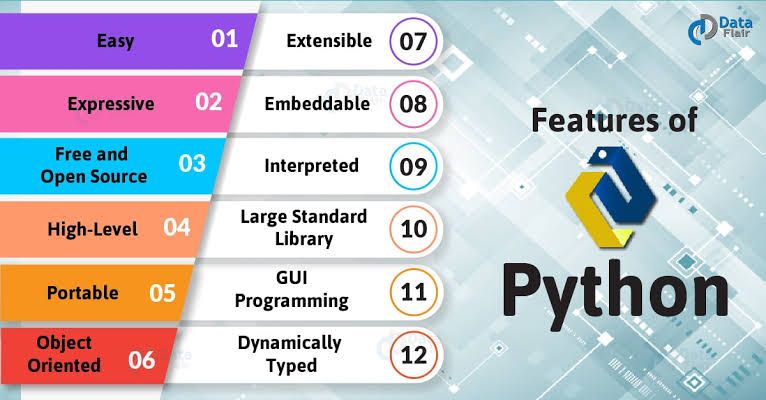Python: The Most Popular Programming Language Of Today's World
Jun 24, 2019 • 40 views

Python is a general purpose and higher -level programming language. Python programming language was developed byGuido Van Rossum in 1990. It was named after famous BBC comedy show Monty Python's Flying Circus. It has since been developed by a large team of volunteers and is freely available from the Python Software Foundation (PSF).Python was derived from many other languages like ABC, Modula - 3, C, C + + etc. It is a freeware interpreted, object oriented, high level powerful programming language available on almost operating systems.
Features of Python

1. Easy to code: Python is very easy to code. Compared to other popular languages like Java and C ++, it is easier to code in Python. Anyone can learn python syntax in just few hours. Though sure, mastering Python requires learning about all its advanced concepts and packages and modules. That takes time. Thus, it is programmer - friendly.
2. Easy to read:Being high - level language, Python code is quite like English. Looking at it, you can tell what the code is supposed to do. Also, since it is dynamically - typed, it mandates indentation. This aids readability.
3. Expressive: First, let's learn about expressiveness. Suppose we have two languages A and B, and all programs that can be made in A can be made in B using local transformations. However, there are some programs that can be made in B, but not in A, using local transformations. Then, B is said to be more expensive than A. Python provides us with a myraid of constructs that helps us focus on the solution rather than on the syntax. This is one of the outstanding python features that tells you why you should learn Python.
4. Free and Open - Source: Firstly, Python is freely available. Secondly, it is open - source. This means that its source code is available to the public. You can download it, change it, use it and distribute it. This is called FLOSS(Free /Libre and Open Source Software).
5. High - level: It is a high - level programming language. This means that as programmers, we don't need to remember the system architecture. Nor do we need to manage the memory. This makes it more programmer - friendly.
6. Portable: Let's assume you've written a Python code for your Windows machine. Now, if you want to run it on a Mac, you don't need to make changes to it for the same. In other words, you can take one code and run it on any machine, there is no need to write different code for different machines. This makes Python a portable language. However, you must avoid any system - dependent features in this case.
7. Interpreted :If you're any familiar with languages like C + + and Java, you must first compile it, and then run it. But in Python, there is no need to compile it. Internally, its source code is converted into an immediate form called byte code. So, all you need to do is to run your Python code without worrying about linking to libraries, and a few other things. By interpreted, we mean the source code is executed line by line, and not all at once. Because of this, it is easier to debug your code. Also, interpreting makes it just slightly slower than Java, but that does not matter compared to the benefits it has to offer.
8. Object - Oriented : A programming language that can model the real world is said to be object - oriented. It focuses on objects, and combines data and functions. Contrarily, a procedure - oriented language revolves around functions, which are code that can be reused. Python supports both procedure - oriented and object - oriented programming which is one of the key python features. It also supports multiple inheritance, unlike Java. A class is a blueprint for such an object. It is an abstract data type, and holds no values.
9. Extensible : If needed, you can write some of your Python code in other languages like C++. This makes Python an extensible language, meaning that it can be extended to other languages.
10. Large Standard Library : Python downloads with a large library that you can use so you don't have to write your own code for every single thing. There are libraries for regular expressions, documentation - generation, unit - testing, web browsers, threading, databases,CGI, email, image manipulation, and a lot of other functionality.
11. GUI Programming : Python supports GUI applications that can be created and ported too many system calls, library etc.
12. Dynamically Typed : Python is dynamically - typed. This means that the type for a value is decided at runtime, not in advance. This is why we don't need to specify the type of data while declaring it.
